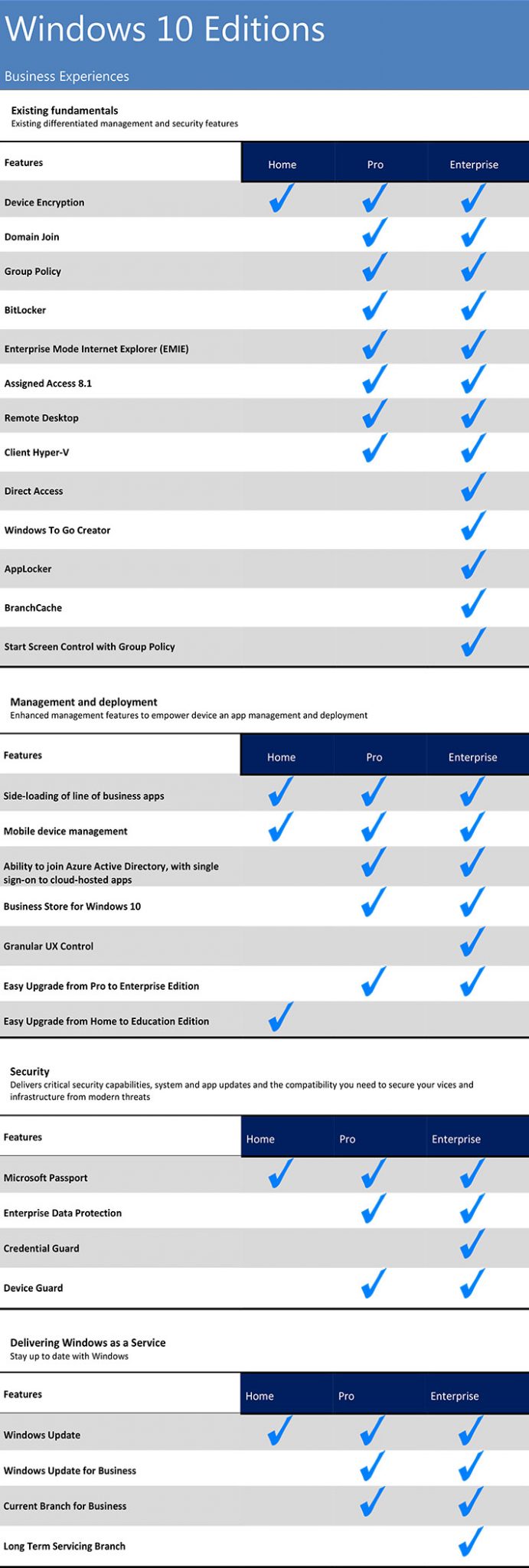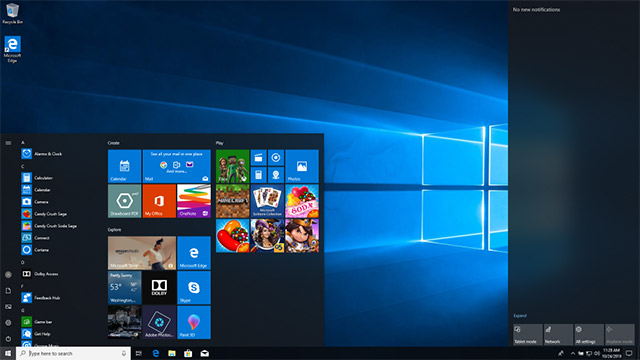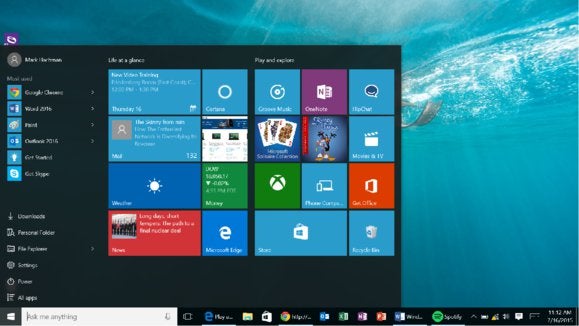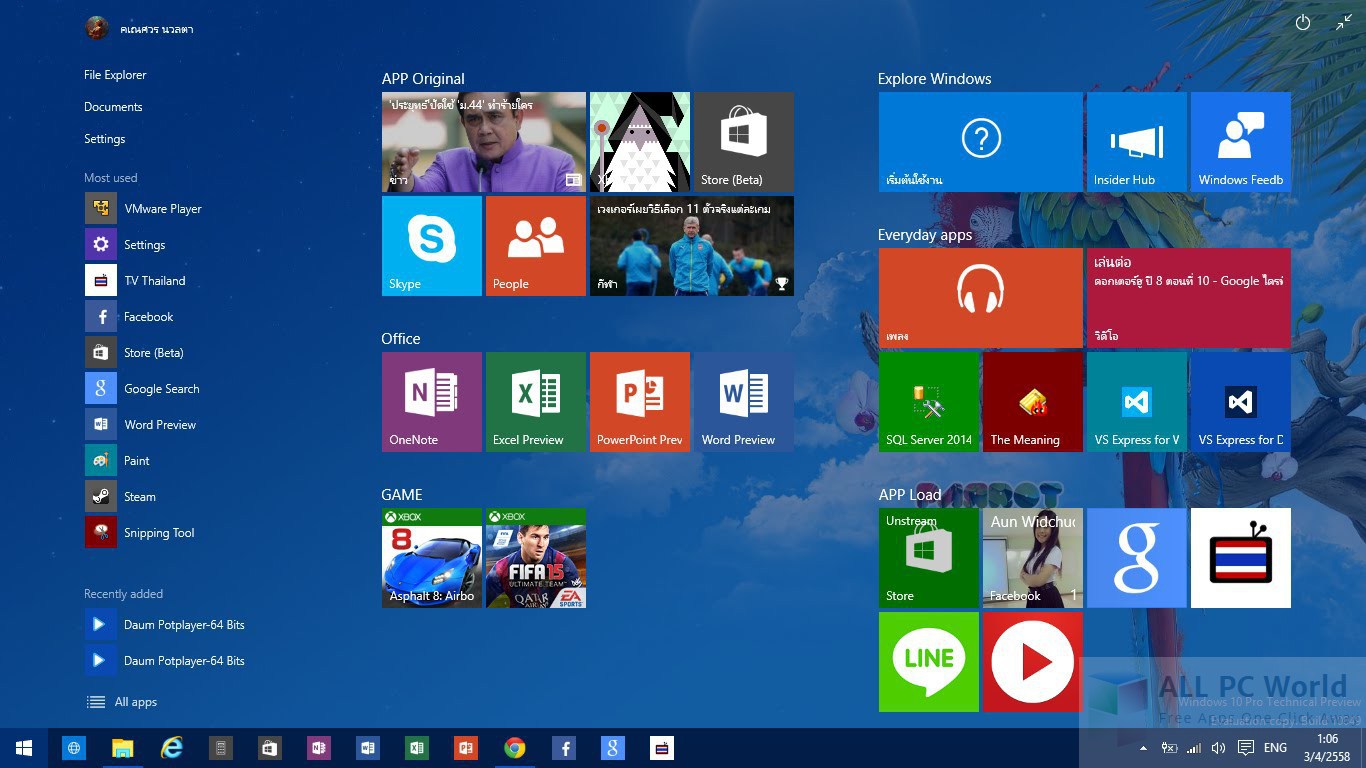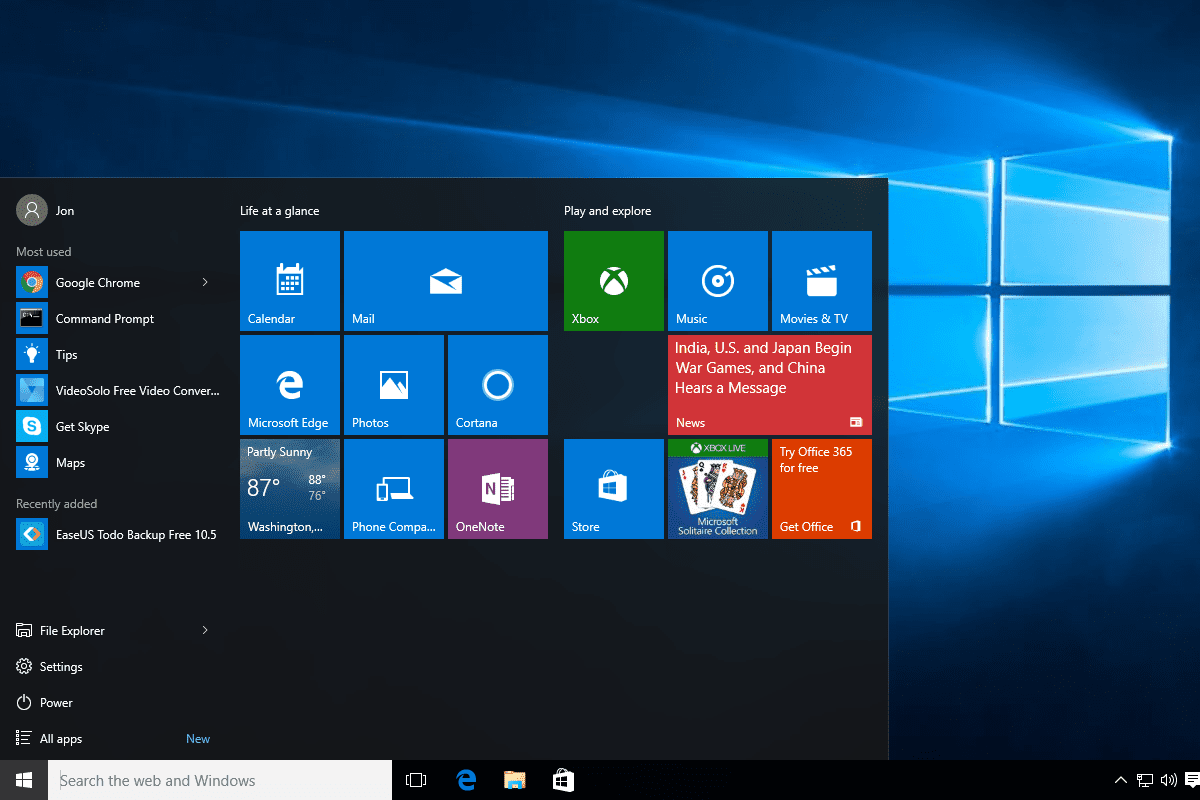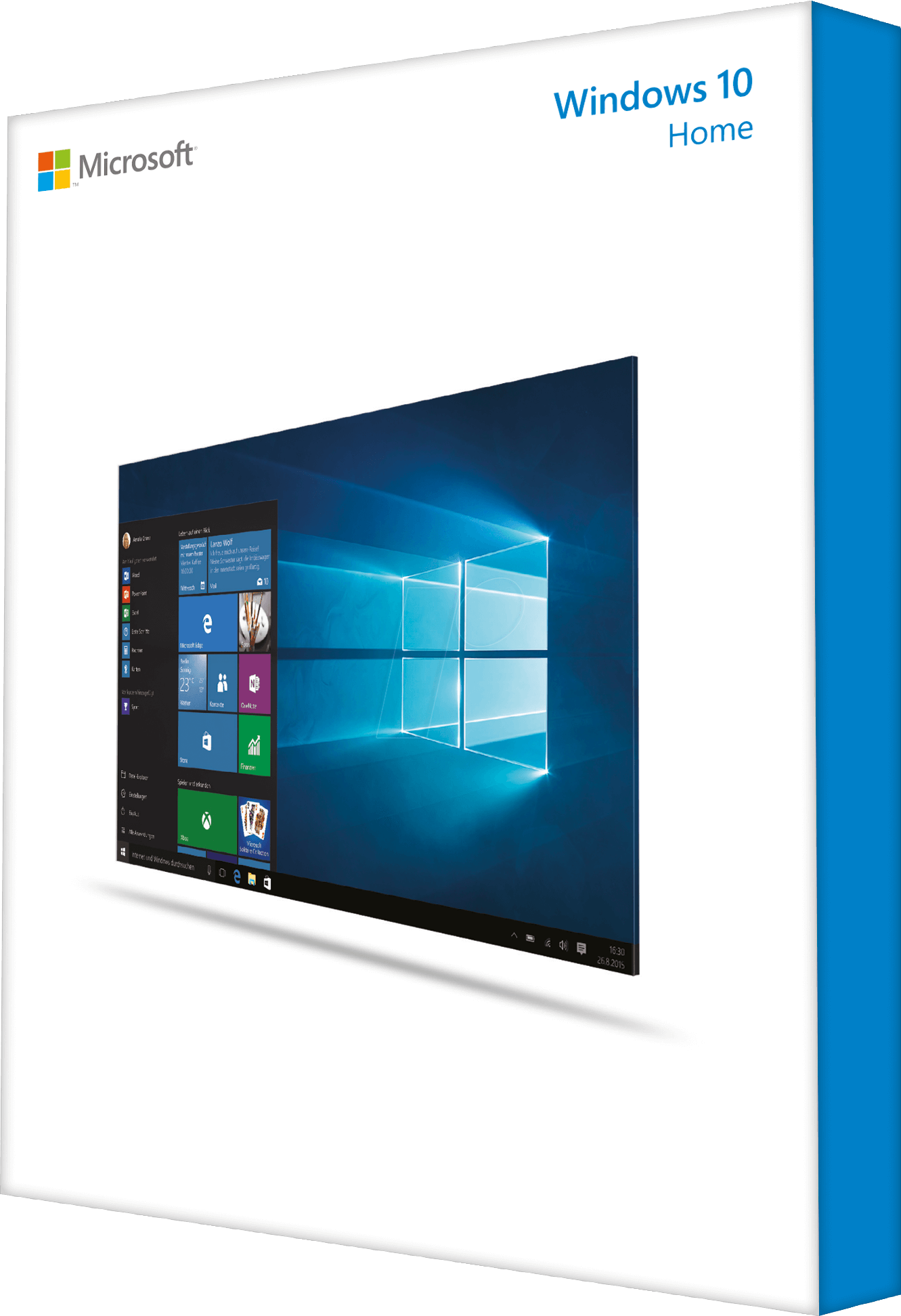Windows 10 Enterprise builds on Windows 10 Pro, adding advanced features designed to meet the demands of medium and large sized organizations. It provides advanced capabilities to help protect against the ever-growing range of modern security threats targeted at devices, identities, applications and sensitive company information. Windows 10 Enterprise also supports the broadest range of options for operating system deployment and comprehensive device and app management.
It will be available to our Volume Licensing customers, so they can take advantage of the latest innovation and security updates on an ongoing basis. At the same time, they will be able to choose the pace at which they adopt new technology, including the option to use the new Windows Update for Business. With Windows 10, Enterprise customers will also have access to the Long Term Servicing Branch as a deployment option for their mission critical devices and environments.
And as with prior versions of Windows, Active Software Assurance customers in Volume Licensing can upgrade to Windows 10 Enterprise as part of their existing Software Assurance benefits. Windows 10 Pro is a desktop edition for PCs, tablets and 2-in-1s. Building upon both the familiar and innovative features of Windows 10 Home, it has many extra features to meet the diverse needs of small businesses. Windows 10 Pro helps to effectively and efficiently manage their devices and apps, protect their sensitive business data, support remote and mobile productivity scenarios and take advantage of cloud technologies. Windows 10 Pro devices are a great choice for organizations supporting Choose Your Own Device programs and prosumer customers. Extended support until January 13, 2032The original release of Windows 10 receives mainstream support for five years after its original release, followed by five years of extended support, but this is subject to conditions.
Microsoft stated that these devices would no longer receive feature updates, but would still receive security updates through January 2023. Microsoft will continue to support at least one standard Windows 10 release until October 14, 2025. Does this mean that the lower versions might not have unlimited access to some features?
Windows 10 Pro - business and advanced users As usual, 'Pro' is essentially 'Home' with a few extra features bolted on that advanced and business users will likely want to take advantage of. Additional data protection, remote features, cloud technologies and perhaps more interestingly Windows Update for Business will be the main additions. There's also the ability to use distribution rings to specify which devices get updates first - you might want to hold off on some areas of your business until the updates have been tested for example. The upgrade offer was marketed and initiated using the "Get Windows 10" application, which was first downloaded and installed via Windows Update in March 2015. Third-party programs were also created to assist users in applying measures to disable GWX. Device Guard is designed to protect against zero-day exploits, and runs inside a hypervisor so that its operation remains separated from the operating system itself.
These are the core differences in Windows 11 Home vs Pro editions. As we've mentioned, most of them revolve around features meant for business users. Some are designed to protect especially sensitive information, while others have to do with quickly setting up devices for users and managing them remotely. For the average person walking into a store, you're probably going to be just fine with Windows 11 Home.
The odds are if you need Windows 11 Pro, you already know you need it and why. On May 2, 2017, Microsoft unveiled Windows 10 S , a feature-limited edition of Windows 10 which was designed primarily for devices in the education market , such as the Surface Laptop that Microsoft also unveiled at this time. The OS restricts software installation to applications obtained from Microsoft Store; the device may be upgraded to Windows 10 Pro for a fee to enable unrestricted software installation. As a time-limited promotion, Microsoft stated that this upgrade would be free on the Surface Laptop until March 31, 2018. Windows 10 S also contains a faster initial setup and login process, and allows devices to be provisioned using a USB drive with the Windows Intune for Education platform.
Windows 10 is available in five main editions for personal computing devices; the Home and Pro editions of which are sold at retail in most countries, and as pre-loaded software on new computers. Home is aimed at home users, while Pro is aimed at power users and small businesses. Enterprise and Education, the other editions, contain additional features aimed towards business environments, and are only available through volume licensing.
Windows 10 received generally positive reviews upon its original release. The system administrators can configure these settings for computers joined to the same domain. Other experienced users can also use group policy editor to their own PCs. Furthermore, Windows 10 Pro allows virtualization through Microsoft Hyper-V. The remote desktop connection is another feature that it has. Moreover, PCs with Pro edition can accept or host an inbound terminal server session. These are some of the extra features available in Windows 10 Pro.
Windows 10 has become the most popular operating system for desktop computers, with more than 1.3 billion active PCs running it. Despite focusing on the new Windows 11 release—now rolling out—Microsoft continues to support Windows 10 with servicing updates. The OS continues to offer unique capabilities like touch input, a voice-based virtual assistant, face login, Windows Defender security, and mixed reality tools.
Still-important but more mundane features include an improved screenshot tool, better window arrangement, and unified notifications. The OS has reached a point of polish and functionality to earn it a PCMag Editors' Choice award. 10 heavily emphasizes freemium services, and contains various advertising facilities. Some outlets have considered these to be a hidden "cost" of the free upgrade offer.
This edition is designed for "special-purpose devices" that perform a fixed function . For this reason, it excludes Cortana, Microsoft Store, and all bundled Universal Windows Platform apps . The new Start menu takes after Windows 7's design by using only a portion of the screen and including a Windows 7-style application listing in the first column.
What Is Windows 10 Home Vs Windows 10 Pro Myerson said that these changes would occur in a future update, but did not elaborate. Windows Phone 8.1 would share nearly 90% of the common Windows Runtime APIs with Windows 8.1 on PCs. The difference between Windows 10 Home and Pro is that the Microsoft designed Home mainly for regular users while Pro for businesses. Windows 10 Mobile is designed to deliver the best user experience on smaller, mobile, touch-centric devices like smartphones and small tablets.
It boasts the same, new universal Windows apps that are included in Windows 10 Home, as well as the new touch-optimized version of Office. Windows 10 Mobile offers great productivity, security and management capabilities for customers who use their personal devices at work. In addition, Windows 10 Mobile will enable some new devices to take advantage of Continuum for phone, so people can use their phone like a PC when connected to a larger screen.
As business users often deal with especially sensitive information, there are also some extra security features in Windows 11 Pro. This feature encrypts data stored on your hard drive so no one else can access it. Even if your computer is stolen, your files are protected from users other than yourself. Pro users can get updates from Windows Update for Business, which includes options for scheduling updates so they don't reboot PCs at important business times. As of the May 2019 update, the minimum disk space requirement has been increased to 32 GB. In addition, on new installations, Windows permanently reserves up to 7 GB of disk space in order to ensure proper installation of future feature updates.
Feature updates prior to version 1909 are distributed solely as an in-place upgrade installation, requiring the download of a complete operating system package (approximately 3.5 GB in size for 64-bit systems). Unlike previous builds, version 1909 is designed primarily as an update rollup version of 1903, focusing primarily on minor feature additions and enhancements. For upgrades to 1909 from 1903, a new delivery method is used where its changes were delivered as part of the monthly cumulative update, but are left in a dormant state until the 1909 update "enablement" patch is installed. The full upgrade process is still used for those using builds prior to 1903. 10 Home and Pro is "Semi-Annual Channel " (formerly "Current Branch", or "CB"), which receives stable builds after they are publicly released by Microsoft. Each build of Windows 10 is supported for 18 months after its original release.
10 product keys, meaning they could be entered during installation to activate the free license, without the need to upgrade first to "activate" the hardware with Microsoft's activation servers. Windows 10 provides greater integration with the Xbox ecosystem. Windows 10 also allows users to control and play games from an Xbox One console over a local network. The Xbox Live SDK allows application developers to incorporate Xbox Live functionality into their apps, and future wireless Xbox One accessories, such as controllers, are supported on Windows with an adapter.
The professional version of Windows 10 includes many extra features designed for businesses. It has virtually everything offered by Windows Home, plus additional security and management services. This version of Windows 10 is typically purchased in bulk by companies or schools, though you can configure desktops and laptops to include it versus using Home. Hyper-V is a Windows-only hypervisor used for running virtual machines on CPUs that support virtualization. If you plan on running VMs, this feature might be worth the cost of Pro, but if virtualization is all you need, there are free products like Virtualbox that offer more features and work with multiple operating systems. While Hyper-V is included with your Windows 10 Pro license, it needs to be downloaded and installed separately.
Windows 10 Mobile Enterprise is designed to deliver the best customer experience to business customers on smartphones and small tablets. It offers the great productivity, security and mobile device management capabilities that Windows 10 Mobile provides, and adds flexible ways for businesses to manage updates. In addition, Windows 10 Mobile Enterprise will incorporate the latest security and innovation features as soon as they are available. Of course, the bulk of the differences between Home and Pro editions of Windows 11 are for businesses. Most device management capabilities aren't available in Windows 11 Home at all.
Windows 11 Pro, however, supports things like Group Policy, which lets IT admins configure certain policies for groups of devices in one go. There's also Windows Update for Business, which lets companies control how updates are rolled out to their users to avoid unexpected issues. Another difference that will be noticeable for business users is that Windows 11 Home PCs can't be joined to Active Directory. Active Directory solutions are necessary for managing business devices, such as configuring access to certain resources, deploying apps, and so on. Those are all professional tools, so they don't make sense for most Windows 11 Home users. As you may know, every major version of Windows comes in a few different editions.
The same applies to Windows 11, which has mostly the same editions as Windows 10 aside from the upcoming Windows 11 SE for education. For most people though, it's going to come down to Home and Pro. These are the two editions you'll be able to find in stores or pre-installed on computers. If you're looking for a comparison of Windows 11 Home vs Windows 11 Pro, we've rounded up all the major differences here. Before selecting a Windows 10 edition, the first step in any migration plan is an assessment of your IT environment. With Lakeside Software's SysTrack, you can quickly and accurately collect data on your users' PC environment to better inform your Windows 10 migration plan.
This allows enterprises to determine the necessary costs and scheduling of the migration process. Microsoft has offered Pro versions of their OS since Windows XP. Similar to every other Pro model, the Windows 10 version is designed with business professionals in mind. It includes the core Windows 10 Home OS, but with a handful of additional security, productivity, and business management features.
Earlier Windows 10 features still deserve attention, including Clipboard History , a powerful screenshot tool, Timeline, Focus Assist, Game mode, Dark mode, Nearby Sharing, parental controls, and an updated News app. The Your Phone app syncs photos, SMS messages, and even voice calls fromAndroid phones and LTE-equipped laptops. These upgrades join Windows Hello face login and other Windows exclusives. Even with all its forward-looking features, the OS remains familiar to longtime Windows users.
For intrigued Apple users, I've compiled a list of15 Windows tips for Mac users. Rather than classifying as a full edition of Windows 10, "S" is a mode that runs on either Home or Pro versions of the OS. It's designed to optimize security and performance, and it runs only apps that are downloaded from the Microsoft Store and browses the internet through Edge. Anyone with Home or Pro editions can make the upgrade at any time, but it's not a forced update.
You can also switch out of S mode at any time, reverting back to Home or Pro, though you can't switch back once you've gone one way. In March 2016, some users also alleged that their Windows 7 and 8.1 devices had automatically begun upgrading to Windows 10 without their consent. In June 2016, the GWX dialog's behavior changed to make closing the window imply a consent to a scheduled upgrade. It was concluded that these users may have unknowingly clicked the "Accept" prompt without full knowledge that this would begin the upgrade.
Other critics argued that Microsoft should not have triggered any downloading of Windows 10 installation files without user consent. A new iteration of the Start menu is used on the Windows 10 desktop, with a list of places and other options on the left side, and tiles representing applications on the right. The menu can be resized, and expanded into a full-screen display, which is the default option in Tablet mode. A new virtual desktop system was added by a feature known as Task View, which displays all open windows and allows users to switch between them, or switch between multiple workspaces. Universal apps, which previously could be used only in full screen mode, can now be used in self-contained windows similarly to other programs.
Program windows can now be snapped to quadrants of the screen by dragging them to the corner. When a window is snapped to one side of the screen, Task View appears and the user is prompted to choose a second window to fill the unused side of the screen (called "Snap Assist"). The Windows Runtime app ecosystem was revised into the Universal Windows Platform . These universal apps are made to run across multiple platforms and device classes, including smartphones, tablets, Xbox One consoles, and other devices compatible with Windows 10. Even though the defaults are similar to Windows 10 Home, Pro offers more control over your Windows Updates.
The Windows 10 Pro Creators Update, for instance, lets you pause updates for up to 35 days. In current and previous releases, you could configure these options through the Group Policy editor, a feature that has always been exclusive to the Pro SKU. For users such as myself, the pause option is a welcome addition. I live in the sticks, and I have to work with a limited 3G metered connection.
Windows 10 sometimes doesn't care even when I adjust my connection as Metered and still slips through with those large updates the operating system is notorious for. The Home version will suffice for majority of the individuals using Windows at home. The Pro focuses entirely on security and compatibility, and ease of use. Both the Windows versions come with support for Microsoft Passport, device encryption, side-loading of business apps, and mobile device management. Along with that, both versions can be easily upgraded to Windows 10 Education Edition. With the release of Windows 10, Microsoft has started providing two feature updates per year, along with monthly quality updates.
Here, the Remond-based company doesn't differentiate between the editions and offers free Windows Updates for both Home and Pro users. Microsoft has offered a Pro version of Windows since the XP days, bringing with it additional features for power users that Home doesn't offer. While many of the extra features of Windows 10 Pro are clearly designed for business use, like group policy management and domain binding, there are other features that an enthusiast might not be able to live without. Here's a breakdown of the most useful features that you get with Windows 10 Pro, as well as free alternatives, when applicable. Buy the pro version for the features you will never even need or use for your home laptop. Meanwhile, Windows messes up with the updates irrespective of the version you buy.



